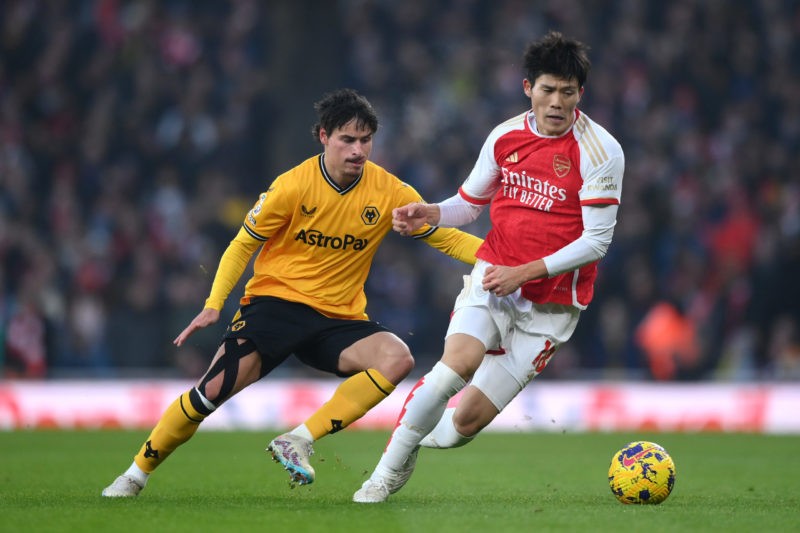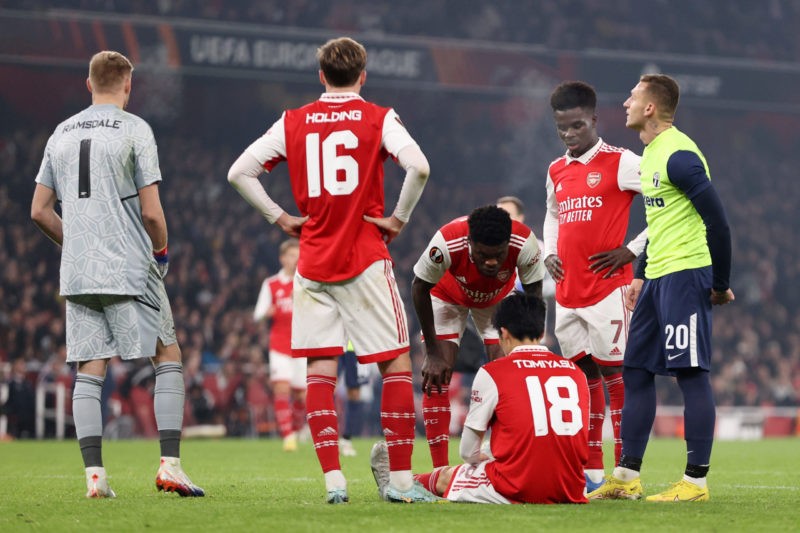As Arsenal grapple with Takehiro Tomiyasu’s latest calf injury, this article explores the complexities and challenges of recovering from such issues, which are particularly prevalent among top-level footballers.

Understanding calf injuries in football
Arsenal’s recent 3-2 victory against Luton was dulled somewhat by injury concerns for defender Takehiro Tomiyasu.
Manager Mikel Arteta revealed in his post-match comments that Tomiyasu, who has become a key part of Arsenal’s defence, suffered a serious calf injury.
The extent of the injury, confirmed by a scan, implies that Tomiyasu will be sidelined for an extended period and he is expected to miss the festive period.
Why calf problems can be particularly troublesome for elite players

Calf injuries are a common yet often troublesome issue for top-level footballers.
The nature of the sport, which demands intense physical exertion, rapid changes in direction, and frequent bursts of speed, places significant strain on the lower leg muscles, especially the calf.
The calf muscle: essential but vulnerable

The calf muscle, primarily comprising the gastrocnemius and soleus muscles, plays a crucial role in football.
It’s pivotal for actions like sprinting, jumping, and quick changes in direction.
However, this importance also makes it vulnerable. During a match, the calf muscle undergoes constant stress, making it prone to strains or tears.
The high-stakes of top-level football

At the elite level, there’s an immense pressure to perform at peak physical condition.
The intensity of training and matches means players often push their bodies to the limit.
This can lead to overuse, where muscles become fatigued and more susceptible to injury.
The challenge of healing and recurrence

Calf injuries can be notoriously slow to heal due to the muscle’s constant use in everyday activities.
Even walking can prolong recovery.
This can be frustrating for players, who are eager to return to the pitch but risk re-injury if they come back too soon.
The risk of recurrence is high because even a minor calf strain can leave the muscle slightly weaker or less flexible, making it more prone to future injuries.
The role of rehabilitation and prevention

Recovery from a calf injury isn’t just about healing the muscle; it’s about strengthening it to prevent future issues.
This involves a careful balance of rest, physiotherapy, and gradually increasing exercise intensity.
However, given the competitive nature of top-level football, there’s often a tension between adequate recovery and the desire to return to play.
The psychological impact

Repeated calf injuries can also have a psychological effect on players.
The fear of re-injury can impact their performance, making them more tentative on the field.
This, in turn, can lead to altered playing styles that might inadvertently increase the risk of other injuries.
Conclusion
Calf injuries in top-level footballers are a significant concern due to the essential function of these muscles in the sport and the high demands placed on them.
The key to managing these injuries lies in a holistic approach: understanding the need for complete healing, effective rehabilitation, and the psychological impact of recurrent injuries.
As sports science evolves, so do the strategies to prevent and manage such injuries, but the challenge remains a significant aspect of modern football.

